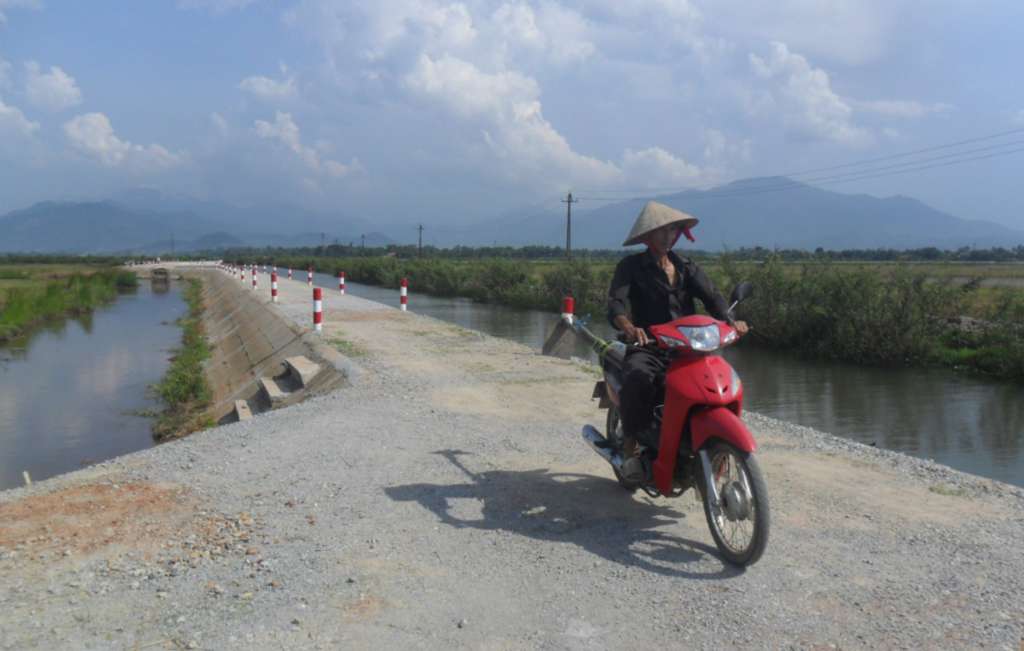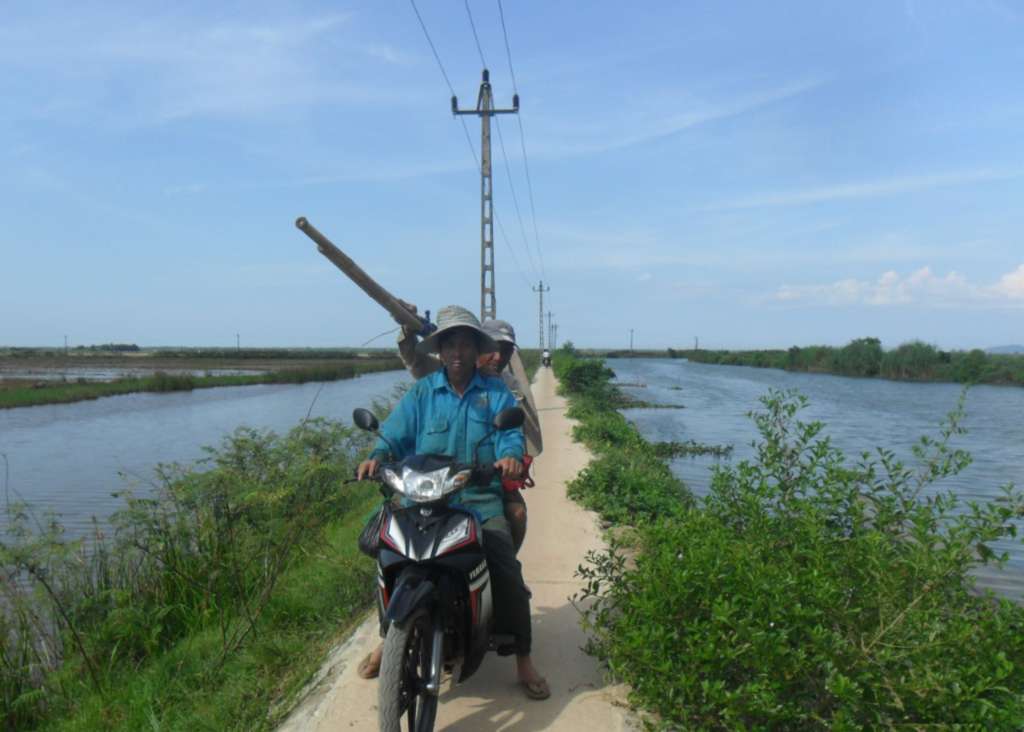Vietnam - Dyke upgrade in Phu Loc District brings peace of mind to 1700 households
Bau Duoc dyke has a direct impact on the agricultural production as well as transportation efficiency and safety for nearly 2 000 people in Loc An commune. Whereas the dyke functions as a protective levee against flooding of around 250 hectares of paddy field it also serves as a key means for farmers to transport their produce during the harvest season. The dyke will also take local populations from Chau Thanh village to the centre of the commune.

Prior to the renovation, being a low-lying and vulnerable earthen embankment with small crest, the dyke would get severely damaged by floods every year. As such, it did not do much to protect people’s livelihoods, and making use of the dyke for transportation purposes would at times be cumbersome, and dangerous as well.

With financial support of the Luxembourg Development Cooperation, Bau Duoc dyke was upgraded and put into operation in May 2015. The dyke base of 921m was enlarged and reinforced, the slopes of the embankment protected with concrete slabs, the surface macadamized and three drainage culverts were added to regulate water levels. Further, an access road of 450m was built to connect the dyke with other in-field roads as well as residential areas.
“The new dyke is very effective and helpful for farmers as it now protects 250 hectares of two-crop rice fields cultivated by around 1 700 households from being inundated during the summer and early-year floods”, says Mr Hoang Thi, Vice-Director of Dai Thanh Agricultural Cooperative. “In addition, it helps local farmers save a lot of money, to the tune of 210 million Vietnam dong (over 8 000 EUR) every year, which they would otherwise have to spend on repairing the annual damage to the embankment. Farmers of the four Agricultural Cooperatives of Dai Thanh, Tien Loc, Hai Ha and Chau Thanh are currently using the dyke to visit their rice fields and transport their agricultural produce, as well as for other daily activities”. Mr Thi further stressed the important role the upgraded dyke plays for people’s safety, as “the dyke reduces the risk for 116 households in Chau Thanh village, who are no longer isolated and can be easily evacuated to a safety shelter in the commune centre during heavy floods or typhoons”.

Many of the interviewed local farmers said that the newly upgraded dyke of Bau Duoc would have a positive impact on their production. Mr Nguyen Xuan Hoa, who owns 2 500m2 of paddy field and is a member of Dai Thanh Agricultural Cooperative says: “Since the dyke was put into service nearly three months ago, and due to the time we save on going back and forth to our fields, my family and I have been able to increase the time and frequency of visiting and tending to our fields. We strongly believe this will increase our rice production”.
Mrs Nguyen Thi A’s son nearly died from drowning during last year’s floods. Herself a rice farmer, she stated “It is now very convenient and safe for us to go to the local market and for my children to go to school by themselves on the newly upgraded dyke road. It gives me more time to work on knitting fishing nets which earns us additional income for the family”. Besides safety and peace of mind for her family, she mentions a social benefit that came with the new dyke: “Previously, I was unable to attend the evening events organised in the commune centre because of the dangerous road after sunset. Things have changed now and I can safely attend community and Women’s Union meetings”.
The upgraded Bau Duoc dyke has significant direct economic and social benefits for farmers and residents alike. It not only contributes to higher yields, but also protects families and their livelihoods from the increasing frequency and severity of climate change impacts.
Construction or upgrading of dyke roads is one of many types of infrastructure interventions under project VIE/033. Six such dyke roads were built in the project’s three target districts over the last 18 months, to the benefit of more than 2 800 households (ca. 14 000 people) and for the protection of 549 hectares of agricultural land.
↑ Haut de la page